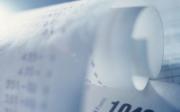
THE 2015-16 budget demonstrates the government’s determination to preserve SA’s hard-won reputation for prudent fiscal management.
It demonstrates, too, how hard it is to do this against a backdrop of sluggish economic growth, rising interest payments on government debt and continued demands to increase government spending.
To reduce the deficit to 4.1% of gross domestic product (GDP) in the coming year, the budget relies on increased tax revenue and tighter controls on spending. Most of the burden of reducing the deficit falls on higher tax collections by increasing the marginal income tax rate for individuals, an increased petrol tax levy and higher sin taxes.
Government tax revenue is budgeted to rise as a consequence, from 24.6% of GDP last year to 25% in the coming tax year and to 25.7% in 2016-17.
At 29.2% of GDP, government spending in 2015-16 is budgeted to be almost unchanged from last year’s 29.3%. Spending is projected to fall to 28.8% of GDP by 2017-18. The projected deficit falls from 4.7% last year to 3.2% of GDP in 2016-17.
Much of the commentary before the budget suggested that taxes would need to rise to compensate for the fall in government revenue since the start of the global financial crisis. This is misleading. The adjustments required in the budget are mainly the result of government spending having risen to much higher levels.
While government revenue fell from 25.9% of GDP in 2007-08 to 22.9% in 2009-10, by 2013-14 revenue had recovered to 24.6% of GDP.
As a result of the announced tax hikes, revenue will now rise to 25.7% of GDP next year, which will almost match the 2007-08 peak.
Taxes in 2007-08 were inflated by three consecutive years of GDP growth of more than 5%, as well as extremely high profits among commodity producers. The government recognised the temporary nature of this windfall, which is why it budgeted for a small surplus at the time.
That revenue has almost returned to the precrisis peak is astonishing, demonstrating that much more is now being squeezed out of a stagnant tax base.
This had to happen because expenditure surged from 25% of GDP in 2007-08 to 29.3% at present. A major cause of this rise was the increased number of public servants — without, the budget notes, any measurable improvement in service delivery.
This now means that just holding spending at its much higher share of GDP will prove challenging. To do so, the budget relies on holding employee numbers constant and achieving significant cutbacks in real spending on travel and subsistence, catering and outside consultants.
The budget also expects to keep salary increases for public servants to only slightly more than inflation over the next three years.
Achieving these goals will require rigid adherence to allocated budgets, for which 中国足彩网 Minister Nhlanhla Nene will require the full support of his Cabinet colleagues and the public sector trade unions.
It is unlikely that failure to meet the spending goals will be offset by higher than budgeted revenue. Resultant higher deficits could well trigger a downgrading of SA’s credit rating by the international credit rating agencies. This would in turn mean higher interest rates and higher than budgeted debt service costs for the government.
The government has ambitious spending plans, which are now on hold. These include raising the qualification age for social grants, introducing National Health Insurance, and larger than budgeted increases in many areas of existing spending.
Increased economic growth is key to meeting these objectives. But given the present power shortfalls, the budget recognises that this is unlikely in the short term, predicting GDP growth of 2% this year and just 3% by 2017.
It is critical that much more attention be given to changing this outlook. Higher growth will generate higher incomes for the employed and jobs for the unemployed. It will also increase the size of the tax base, thereby providing funds for higher government spending on social welfare and poverty alleviation.
By Gavin Keeton
Source: Business Day
Picture: THINKSTOCK
Keeton is with the economics department at Rhodes University.

